The Department of Chemistry is proud to announce a handful of recent, prestigious awards for several of its students and faculty members. Congratulations to all for these major accomplishments.
Leidy Hooker named a National Science Foundation Graduate Research Fellow
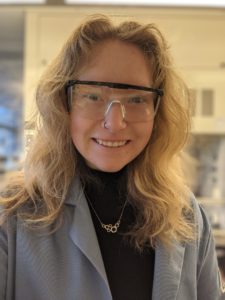 Chemistry graduate student, Leidy Hooker, is now a fellow of the prestigious National Science Foundation Graduate Research Fellowship Program, the oldest graduate fellowship of its kind.
Chemistry graduate student, Leidy Hooker, is now a fellow of the prestigious National Science Foundation Graduate Research Fellowship Program, the oldest graduate fellowship of its kind.
As a fellow, Hooker will receive a three-year annual stipend to cover everyday expenses as well as a cost of education allowance for tuition and fees, paid to the institution. She will also receive opportunities for international research and professional development.
“To receive this fellowship is self-validating,” said Hooker. “When I started my dive into chemistry as an undergraduate, it didn’t come naturally to me, albeit extremely interesting, I had to put in a lot of effort just to keep up with the material. Thankfully, I took advantage of a variety of research opportunities which introduced me to an amazing support network and cultivated a passion for organic chemistry methodology.”
Part of the Bandar Group, Hooker’s research focuses on the discovery of new base-promoted chemical transformations under economical and sustainable conditions.
“This work could improve large scale chemical synthesis and provide increased access to complex bioactive molecules from inexpensive starting materials,” Hooker said.
Chemistry students receiving honorable mentions for the NSF GRFP are Hillary Nguyen and Rachelle Austin.
Carlos Olivo named “Outreach Volunteer of the Year” by the American Chemical Society, Colorado Chapter
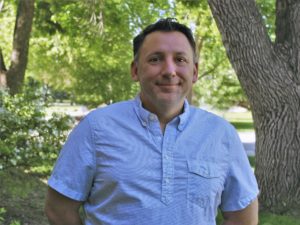 Academic success coordinator and assistant teaching professor, Carlos Olivo, is one 35 nationwide to be named Outreach Volunteer of the Year. This award recognizes above and beyond efforts made by ACS local section and international chapter volunteers who conduct outreach and teach the public about chemistry.
Academic success coordinator and assistant teaching professor, Carlos Olivo, is one 35 nationwide to be named Outreach Volunteer of the Year. This award recognizes above and beyond efforts made by ACS local section and international chapter volunteers who conduct outreach and teach the public about chemistry.
Olivo is receiving this award for his work last fall as the chair for the Regional Rocky Mountain Meeting, an ACS Colorado chapter annual meeting. He embraced the challenge of organizing a virtual event, due to COVID-19, and was able to successfully host the meeting alongside the RMRM2020 organization committee.
Olivo has been involved with the American Chemical Society since 1995, when he was an undergraduate student, and he has long been involved in volunteer work. Before starting at CSU, Olivo was involved in volunteer activities to emphasize the importance and benefits of chemistry by bringing students together from several universities to a chemistry festival. He has also dedicated part of his career to collaborate with the ACS local sections and chaired the Puerto Rico local section in 2013.
“I get to become a role model for my students through this recognition,” said Olivo. “This award means a shout out to good work and a lot of effort engaging with our chemistry community as well as creating awareness of how chemistry is transformative for the betterment of our society.”
Garret Miyake awarded the Journal of Polymer Science Innovation Award
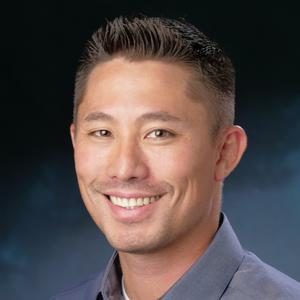 Associate professor, Garret Miyake received the 2021 Journal of Polymer Science Innovation Award for his contributions to polymer science. The award recognizes polymer scientists under the age of 40. Miyake will be recognized with a symposium in association with the American Chemical Society Division of Polymeric Materials: Science and Engineering at the ACS fall national meeting.
Associate professor, Garret Miyake received the 2021 Journal of Polymer Science Innovation Award for his contributions to polymer science. The award recognizes polymer scientists under the age of 40. Miyake will be recognized with a symposium in association with the American Chemical Society Division of Polymeric Materials: Science and Engineering at the ACS fall national meeting.
“This award recognizes the amazing work of the people who I am lucky enough to mentor,” said Miyake. “The students in my group are some of the most talented young scientists in the world, and I am very proud to watch them develop and discover chemistry that we hope will improve the world. I am truly excited for these students and congratulate them for having their hard work and contributions to science be recognized by this prestigious honor.”
The Miyake Group’s research is focused on developing new ways to make chemicals and materials. The group tries to mimic photosynthesis in plants to use sun energy for chemical manufacturing. They are developing catalysts that use the energy from light to synthesize medicines and polymers.
“Using the energy from light is not only a mild and sustainable approach for chemistry but can also allow for the synthesis of chemicals that cannot be produced otherwise,” said Miyake.
Andrea Westlie chosen as one of four national finalists for the American Chemistry Society, Division of Polymer Chemistry Bright Science Award
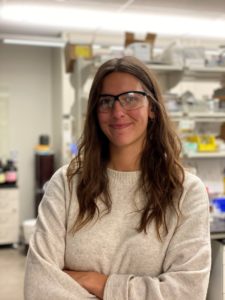 Chemistry graduate student, Andrea Westlie, was one of four national finalists for the 2021 ACS-DSM Bright Science Award for Ph.D. students.
Chemistry graduate student, Andrea Westlie, was one of four national finalists for the 2021 ACS-DSM Bright Science Award for Ph.D. students.
The DSM Bright Science Award was established in 2011 to recognize and reward excellence in innovative Ph.D. research in polymer science technology. From the list of nationwide nominees, four finalists are selected to present a short lecture during a special DSM-POLY symposium held at the fall national meeting of the ACS. The winner is selected at the meeting and receives a $5,500 award. The three runners-up are each awarded $1,500.
“Being a finalist for this award is a huge honor,” said Westlie. “It gives me a platform to make a name for myself in the field of sustainable polymers as well as set me up for future commercial and industrial success. I’m very excited to participate in the symposium in August to meet fellow finalists and other large names in the field.”
Working in the Chen Group, Westlie’s research centers around the biological polymer, polyhydroxyalkanoates (PHAs).
“Microbially produced PHAs currently suffer from slow reaction kinetics, low production volume, and thus high production cost,” said Westlie. “Microbial PHAs typically exhibit inferior thermal and mechanical properties compared to today’s commodity plastics. Recognizing the advantages of the catalyzed ring-opening polymerization (ROP) for its fast chain-growth kinetics to produce condensation polymers with facile tunability and scalability, we have developed the catalyzed chemical synthesis of PHAs by the ROP of eight-membered diolides to address these critical challenges. This chemical synthesis allows us the ability to target designer, high-performance PHAs with new functions, topologies, and morphologies inaccessible by the biosynthetic pathways.”
Two chemistry students awarded the CSU Energy Institute Sponsored 2021 Summer Internship
The Colorado State University Energy Institute offers a limited number of industry internships for both undergraduate and graduate students in areas aligned with the institute’s missions of energy and climate solutions. This year, 17 students were selected, including two chemistry graduate students, Cameron Chrisman and Rafael Almaraz.

“The Energy Institute Internship will allow me to focus my efforts on this research over the summer,” said Chrisman.
Chrisman’s research in the Miyake Group centers on utilizing light to develop new reactions and improve on already existing methodologies.
“Central to my research is the use of light to perform challenging chemical reactions,” said Chrisman. “This type of chemistry, termed photoredox catalysis, has found widespread use in the synthetic organic chemistry field for a variety of reasons. Specific to my research, photoredox catalysis enables chemists to perform powerful transformations under mild and sustainable conditions, since light is a renewable energy source.”
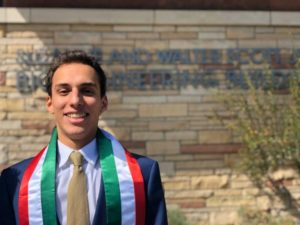
Almaraz’s research is about the growth of nanoscale semiconductor materials.
“These materials are essential for solar energy conversion,” said Almaraz. “Therefore, it is important to be able to grow them consistently.”
Almaraz works in the Sambur Group.
“This award will give me a boost on my research since it will allow me to get the necessary experience and knowledge to start a materials growth lab at CSU,” said Almaraz.
Three chemistry students named VPR Graduate Fellows
Chemistry graduate students – Jewels (Michelle) Fallon, Mariel Price, and Christopher Rom – join the 2021-22 VPR Graduate Fellows Program, comprised of 15 students who were chosen from a group of 35 total individuals who participated in this year’s 3 Minute Challenge. This year, the virtual event allowed participants to record their presentations, which were then housed on YouTube.
As fellows, Fallon, Price, and Rom will have professional development, leadership, and mentorship opportunities during the 2021-22 academic year. They also will each receive $4,000 for travel and research expenses.
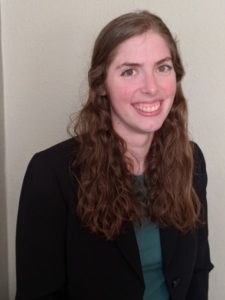
Fallon’s research focuses on how to make solid materials.
“Solid materials are necessary for many modern technologies, but they can be challenging to make since solids are often not very reactive,” said Fallon.
Fallon uses an organic compound to promote reactivity between solids which provides a new tool to make and discover solid materials.
“The VPR fellowship will provide me with opportunities for professional development and funding for conferences in Europe to help me reach my goal of working in France,” said Fallon.
Fallon Presentation: “Methods Matter: A New Technique To Make Solid Materials”
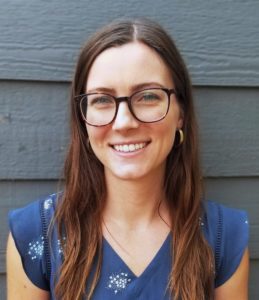
The overarching goal of Price’s research is to improve the sustainability with which plastics are made and recycled. Specifically, her aim is to develop new plastics that can be more readily recycled into valuable materials than current plastics. To achieve this goal, Price is working on re-designing the chemical building blocks plastics are made of, so those building blocks can be recovered from plastic products after they are discarded to make another new and high-quality material.
“It is an honor to be a part of the VPR Fellowship Program at CSU. I am looking forward to participating in the networking events and professional development workshops put on by the VPR Fellowship Program and am excited to get to know graduate students from other departments across CSU.”
Price Presentation: “Designing Plastics With A Circular Lifecycle”
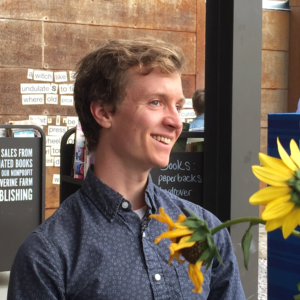
Rom’s research focuses on making new materials called nitrides for semiconductors, magnets, and more.
“These materials are difficult to make as relatively few are known,” said Rom. “Fortunately, recent computational studies have predicted many nitrides that should theoretically form. My work focuses on turning those predictions into reality.”
In doing so, Rom hopes to discover new materials for solar panels, super conductors, and other renewable energy technologies.
“I am honored to be selected as a VPR fellow because I believe teamwork makes the dream work,” said Rom. “I spend a lot of time thinking about my materials, but the VPR Fellows program will help me zoom out to a more global and interdisciplinary perspective. After all, useful technologies, like cellphones for example, are not made of one material, but a diverse set of materials working together. Similarly, this program is an exciting opportunity to connect my expertise with the expertise of others here at CSU, and in doing so, build a useful skillset for solving big problems.”
Rom Presentation: “Wind Meets Earth: Bending The Element Nitrogen With Metals To Make New Materials”